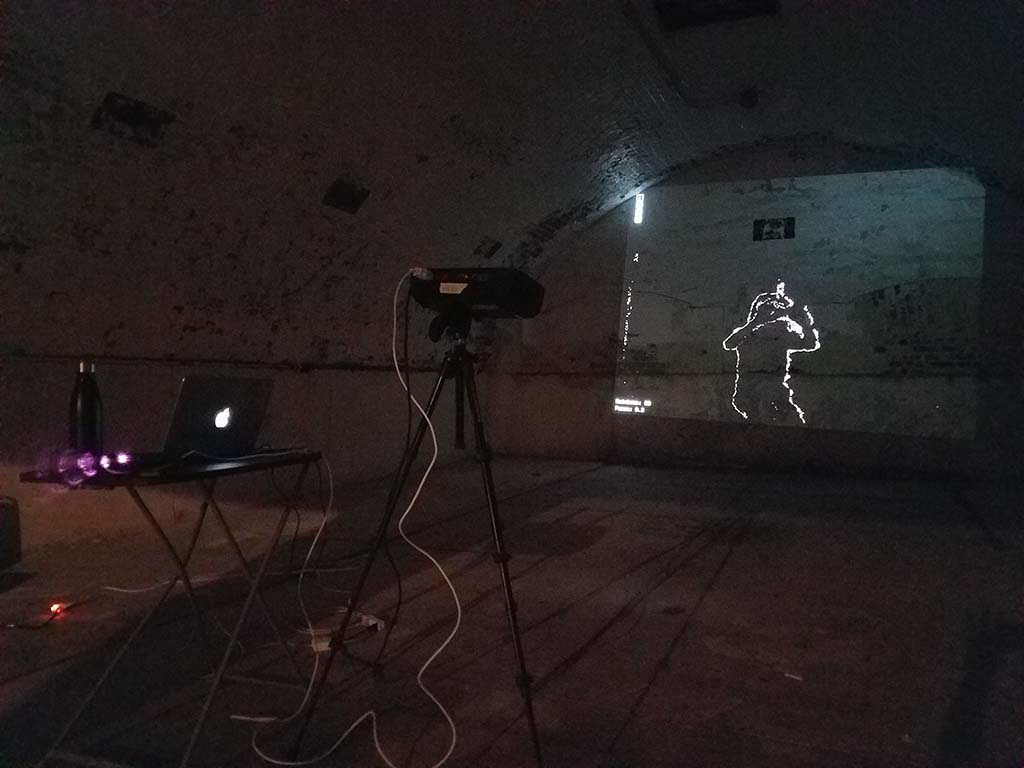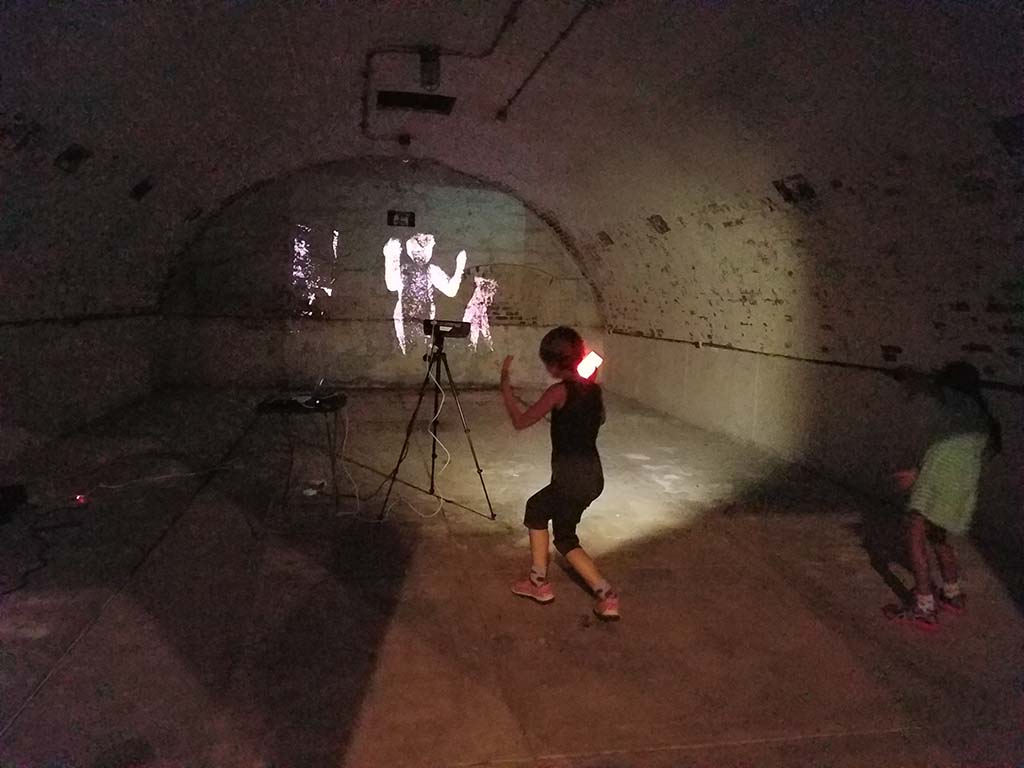Glitch installation requirements
There are three main considerations when choosing a space for Glitch.
- Adequate darkness.
- Positioning the camera and projector in relation to each other.
- Reserving enough space in front of it for participants to move around.
Lighting
Glitch is best enjoyed in the dark, but "conference room with the blinds drawn and the lights slightly dimmed, as for a presentation" will work nicely as well. The camera is very similar to an XBox Kinect in that it senses depth by scattering an invisible infrared grid, so it can work in complete darkness.
Space considerations
Since Glitch is an interactive installation, some space needs to be reserved for participants to move around in front of a camera. The camera has a maximum distance of about 20 feet, though 6-10 feet is optimal.
We also want, but don't need, to give the projector a throw distance of about 30 feet in order to produce an impressive image.
There is also a hard rule that the projector's beam and the camera's field of view should not overlap, otherwise participants will block the display as they move around.
So the primary installation concern is to maximize both camera coverage and projector throw distance. The projector and camera should face opposite directions so that participants can see themselves perfectly mirrored, but this desire takes a backseat to saving space where possible.
Digital signage and conference equipment
I generally assume that Glitch is installed in a space without any A/V setup, so I bring my own projector and tripod. If the space has a ceiling-mounted projector, such as in a classroom or conference room, then the interactive space (including the camera) can move closer to the projection surface without participants blocking the display.
If digital signage is used, then adequate darkness is no longer an issue, though the size of the display will probably be a lot smaller than a projector's.
Content warnings
Glitch features strobing light effects that some people may find overstimulating. It should not be placed somewhere that it could "ambush" someone without giving them the opportunity to avoid it.
Examples

A shot of the projector and camera facing almost opposite directions. The camera's field of view is visible in the purple cone of light, which a smartphone's camera is able to detect.
Most of the space in this installation is dedicated to projecting a huge image (though it was also set in a 60 foot long ammo bunker, so I could afford to).
